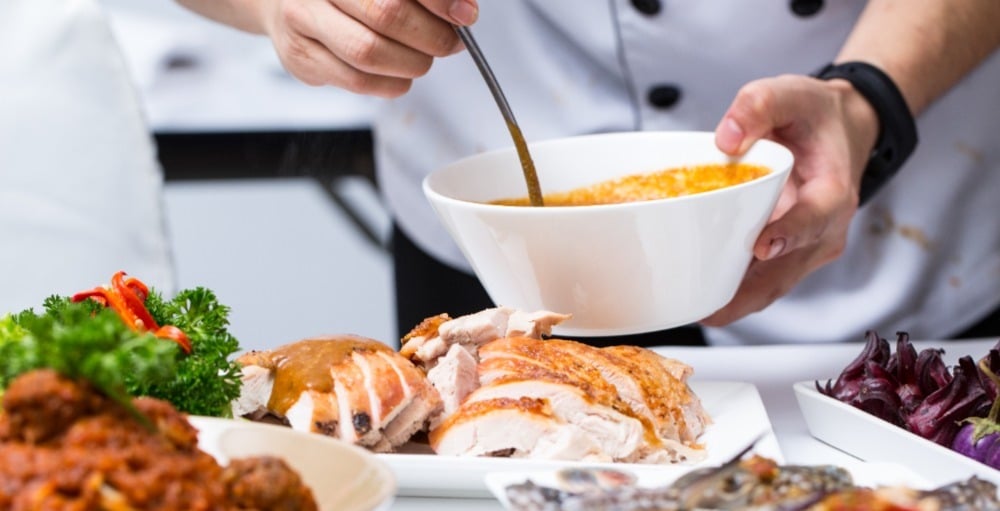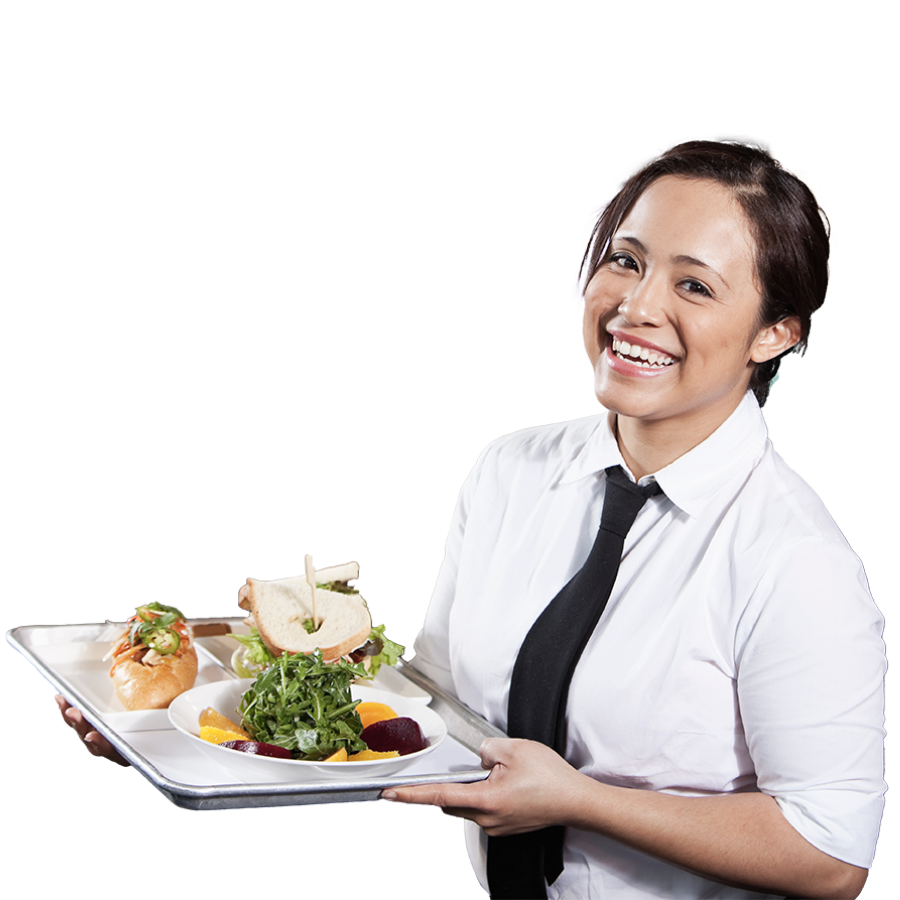Poultry is a popular menu staple in restaurants, especially around the holidays. Be sure you’re working with poultry safely with these tips.
Major holidays are often peak times for food businesses, and around holidays like Christmas or Easter, turkey or other poultry are featured menu items. Poultry is considered a high-risk food, and, as a food handler, you should know how to work with it safely during every step of the food service process. If you know how to handle poultry correctly, you’ll maintain food safety and limit the risk of foodborne illness.
How to handle poultry during purchasing and receiving
When buying poultry, be sure to select a reputable supplier. Confirm that they have good operating procedures and comply with all local laws and regulations. If your supplier delivers high-risk/ potentially hazardous foods like poultry (as well as fish, meat or dairy products) make sure they have all required permits and approvals. A reputable supplier will have no objections if you request to inspect their operating facilities, delivery vehicles or food items, at the supplier’s facility or upon delivery.Reputable suppliers will deliver food at off-peak times to allow for a proper inspection. They also deliver food in clean, high quality, leak-proof packaging and ensure that their delivery vehicles are maintained at the correct temperature for the type of food being delivered.
When receiving poultry deliveries, you should make sure that:
- Fresh product is delivered at a temperature of 40°F/4°C or below
- Frozen product is delivered at a temperature of 0°F/-18°C or below
- The product shows no signs of thawing or ice crystals
- The product shows no signs of other quality issues like discoloration or an off-odor
If the delivery shows any signs of thawing or quality issues, refuse the delivery.
How to properly chill poultry
Once the poultry has been received, it must be stored and chilled immediately. Similar to when it was delivered, poultry should be kept at 40°F/4°C or below in the refrigerator, or at 0°F/-18°C or below in the freezer.
You want to avoid letting the poultry sit in the Temperature Danger Zone, which is the temperature range where harmful pathogens and bacteria grow the quickest. The Temperature Danger Zone is between 41°F and 135°F (5°C and 57°C).
When storing poultry in the refrigerator or freezer, keep it in airtight, food grade containers that are labeled and dated. Fresh poultry should be chilled on lower shelves in the refrigerator so it does not contaminate other items.
Fresh poultry must be cooked within two days of receipt; any poultry that will not be used in that time frame should be frozen or discarded.
How to properly thaw poultry
Once you’re ready to use frozen poultry, you’ll want to ensure it’s thawed correctly. Proper thawing is key to preventing contamination and the growth of harmful microorganisms.Here are some tips for how to properly thaw poultry:
- Poultry should be thawed in the refrigerator on the lower shelf – never at room temperature like on a counter or sink.
- Thawing can take from a few hours up to a few days depending on the size of the poultry, so plan ahead and make sure you’re factoring in enough time to thaw.
- Once poultry has been completely thawed, it must be cooked that day.
- Thawed poultry should never be refrozen.
How to handle poultry during preparation and cooking
Before you start preparing poultry for cooking, be sure to wash your hands using the correct hand-washing method (and wash your hands after you’re done too). Also both before and after preparing poultry, all surfaces, equipment and utensils must be cleaned, sanitized and disinfected.
During preparation, use a dedicated prep space or kitchen surface, as well as tools – such as knives and cutting boards – that are not used for other types of foods (such as vegetables). Never rinse poultry in the sink before – you work with it, as this can allow harmful bacteria to splash onto other surfaces and cause cross-contamination.
Raw poultry (along with meat, seafood and other high-risk foods) has a minimum internal temperature it has to reach to be safe for consumption. When cooking poultry, you’ll first want to ensure that any product that was first frozen is fully defrosted, right through to the center, before cooking. Next, cook poultry to an internal temperature of 165°F/74°C or above.
Use a thermometer to check the internal temperature. There are many types of thermometers available for use in commercial kitchens, the most common of which is the probe thermometer, sometimes known as a bi-couple thermometer. Probe thermometers measure the internal temperature of food through a metal stem.
To check poultry with a probe thermometer, insert the stem into the thickest part of the poultry, making sure to avoid any bones. When cooking whole birds, such as turkey, check the internal temperature by inserting the thermometer in the thigh, the wing, and the thickest part of the breast. When finished, clean, sanitize and disinfect the thermometer before using again.
How to handle poultry with stuffing or breading
Stuffing and breading are popular additions to poultry items, but they can make the poultry potentially unsafe. Stuffing can act as an insulator if cooked inside poultry, and prevent it from reaching the required internal temperature. Therefore, it is recommended to always cook stuffing separately from poultry. If you are cooking stuffing inside the bird, ensure that it also reaches a minimum temperature of 165°F/74°C or above.
Breading can appear to be fully cooked, even when the poultry beneath or inside is not. Use extra caution when cooking breaded poultry, and as always, check the internal temperature of every item with a probe thermometer.
After cooking, any leftover poultry should be refrigerated within two hours, used within three to five days and reheated only once.
By following each of these guidelines on how to handle poultry, you can feel confident that you’re taking the necessary precautions to limit food contamination and prevent foodborne illness outbreaks. Online Food Handler Training is the best way to learn about these and other aspects of proper food safety. Click on the link below to find the Food Handler Course in your state.
For more Food Handler How-Tos, visit our blogs on Frozen Food Handling and How to Wash Produce Properly.

